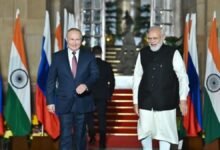US says “Deteriorating Situation of Democracy” in India or Is It About Weapons Business?
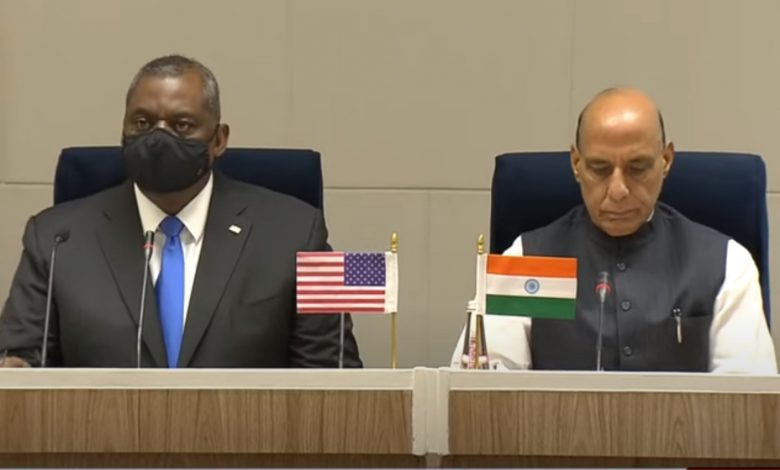
Ahead of US Defence Secretary Lloyd Austin’s visit to India, a senator urged him to take up the issues of sale of Russian S-400 missile system and human rights with the government. Lloyd Austin was scheduled to meet his counterpart Defence Minister Rajnath Singh, along with External Affairs Minister S Jaishankar and National Security Advisor Ajit K Doval, during his visit to New Delhi from March 19 to 21.
He is the first-ever US defence secretary to include India on his maiden foreign trip. The talks were to set the stage for strengthening of defence and strategic ties between the two countries.
“Getting the US-India partnership right is critical to addressing 21st-century challenges, and that includes urging the Indian government to uphold democratic values and human rights,” said Senator Robert Menendez, Chairman of the powerful Senate Foreign Relations Committee, in a letter to Austin.”
In his capacity as Chairman of the Senate Foreign Relations Committee, Menendez plays a key role in influencing the country’s foreign policy and national security.
In a bid to strengthen its Air Defence system against Pakistan and China, Has India Puts its Friendship with the US at stake?
Sidestepping the US pressure (even during Trump’s presidency), India decided not to forgo the $5.2 billion deal with Russia for procurement of the lethal S-400 Triumf missiles, which will be India’s biggest air defence system against China and Pakistan. These S-400s were expected to be deployed from the end of 2020 onward. However, on 2 August 2017, US President Donald Trump had signed into law the CAATSA – ‘Countering America’s Adversaries Through Sanctions Act (Public Law 115-44), which among other things, imposed new sanctions on Iran, Russia and North Korea.
CAATSA is a specifically enacted legislation that aims to prevent revenue from flowing to Russia. If the US chooses, it can impose sanctions on India under CAATSA for the multi-billion-dollar deal with Russia inked in October 2018. However, India has been of the firm opinion that its relations with Russia are historical and that CAATSA is a US law and not an Act passed by the United Nations.
Menendez in his letter to US Defence Secretary Austin said that if India chose to go forward with its plan to purchase the Russian S-400 missile system, it would clearly constitute a sanctionable transaction with the Russian defence sector under provisions of CAATSA.
“I recognize that India is not a US treaty ally and has historical ties with the Soviet and Russian militaries. However, if India chooses to go forward with its purchase of the S-400, that act will clearly constitute a significant, and therefore sanctionable, transaction with the Russian defence sector under Section 231 of CAATSA,”. It will also limit India’s ability to work with the US on development and procurement of sensitive military technology. I expect you to make all of these challenges clear in conversations with your Indian counterparts,” Menendez wrote.”
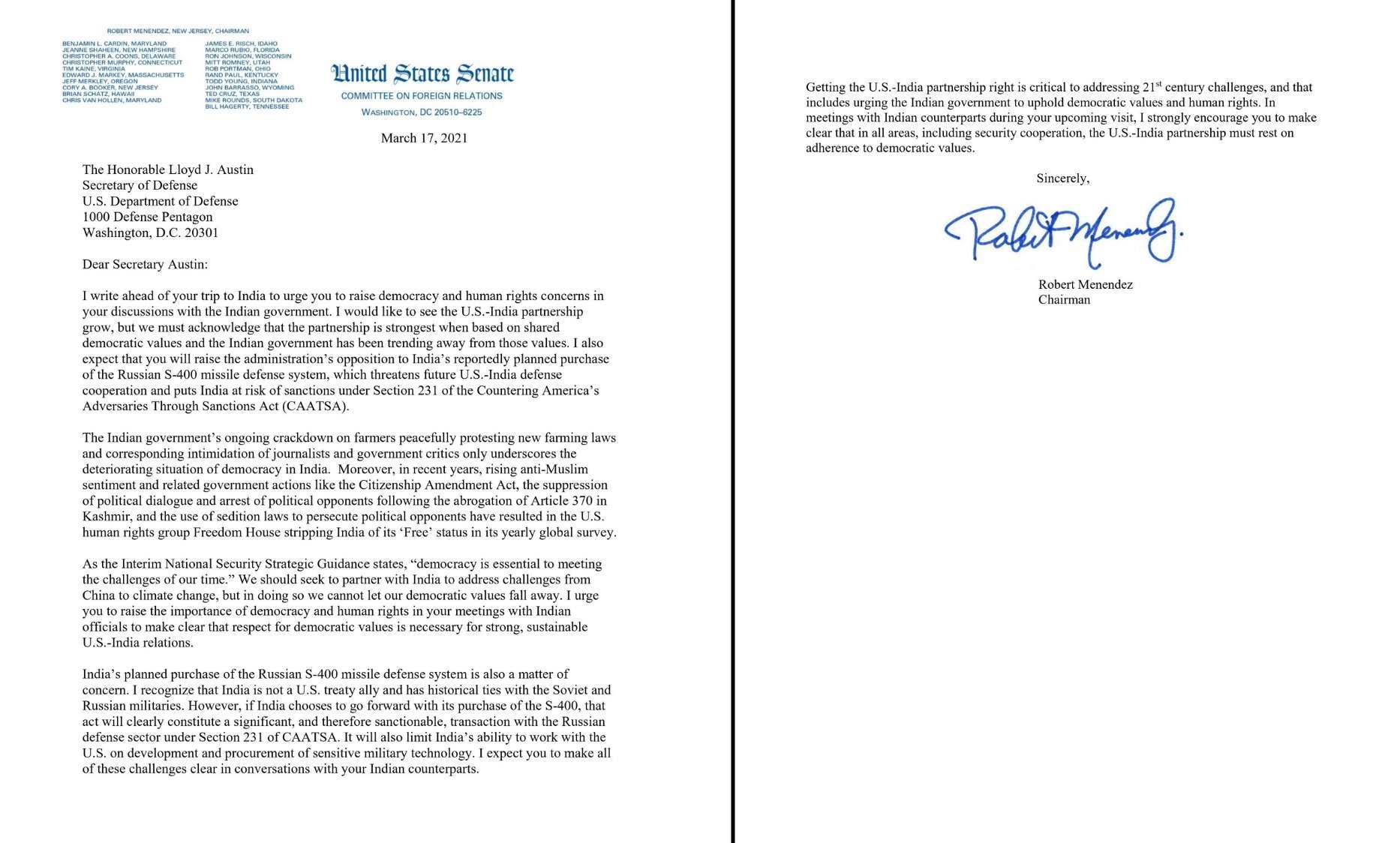
What capabilities of the S-400s make them special?
The S-400 Triumph (NATO reporting name: SA-21 Growler) is an air defence missile system developed by Almaz Central Design Bureau of Russia. The new system replaced the S-300P and S-200 air defence systems of the Russian Army.
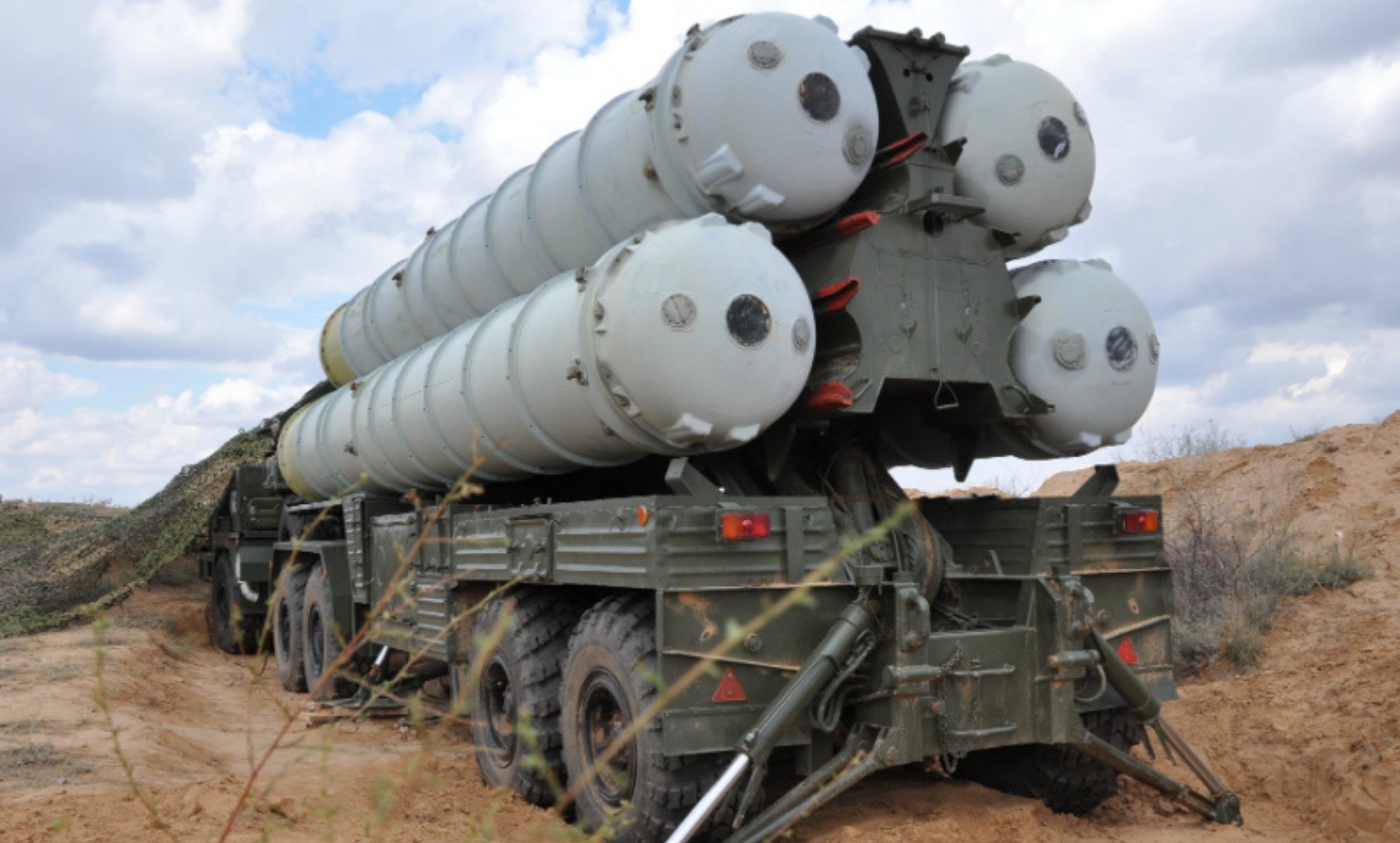
The S-400 was developed as an upgrade of the S-300 series of surface-to-air missile systems. The system entered service in April 2007 and the first S-400 was deployed in combat in August 2007. Russia set up four S-400 regiments defending national airspace in the Moscow region, the Baltic exclave of Kaliningrad, and the Eastern Military District.
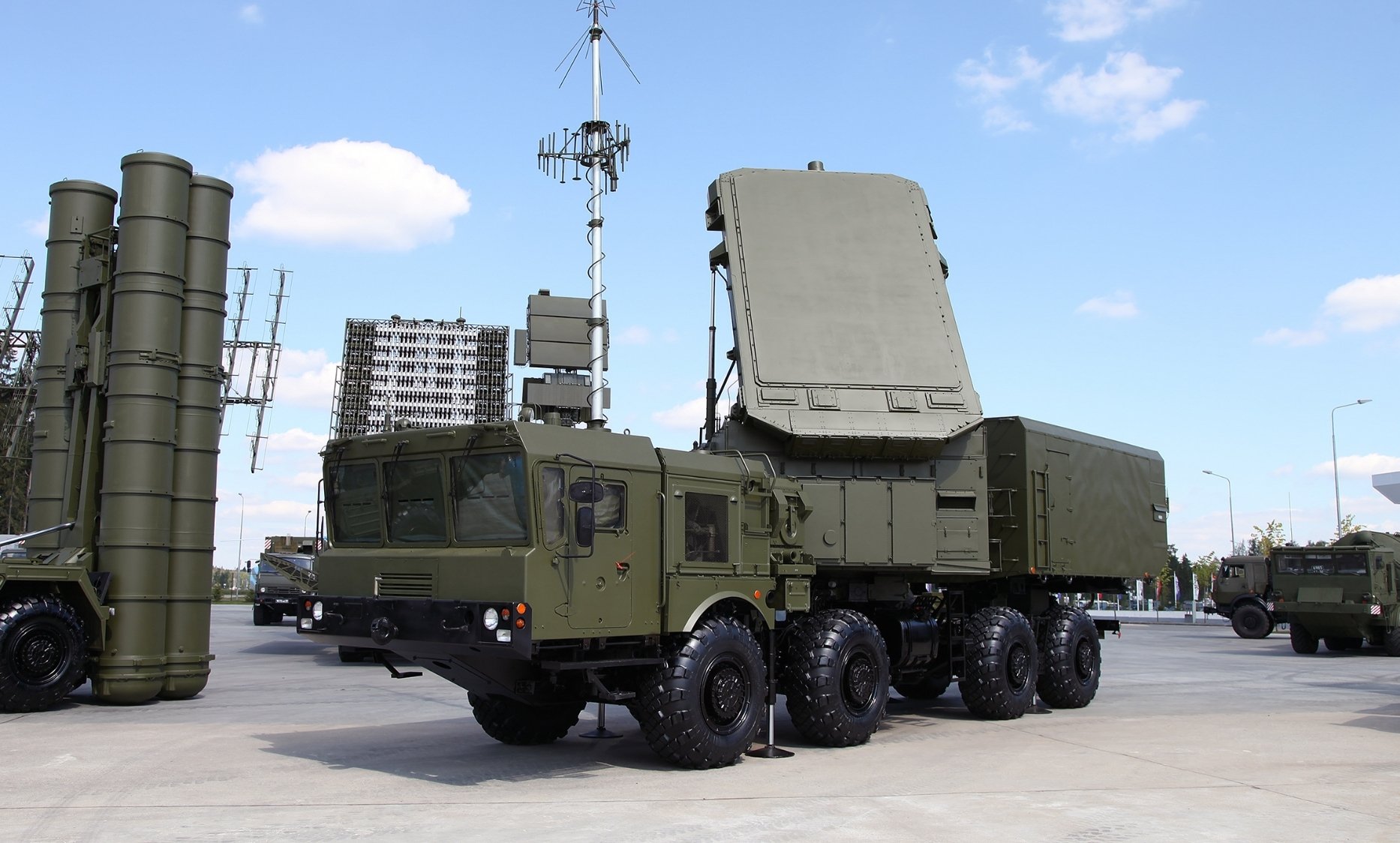
The air defence units of Southern Military District were rearmed with advanced S-400 Triumph by the end of 2012.
Features
- The system can engage all types of aerial targets, including aircraft, unmanned aerial vehicles (UAV), and ballistic and cruise missiles, within the range of 400km at an altitude of up to 30km. The system can simultaneously engage 36 targets.
- The S-400 is twice as effective as the previous Russian air defence systems and can be deployed within five minutes. It can also be integrated into the existing and future air defence units of the air force, army and navy.
